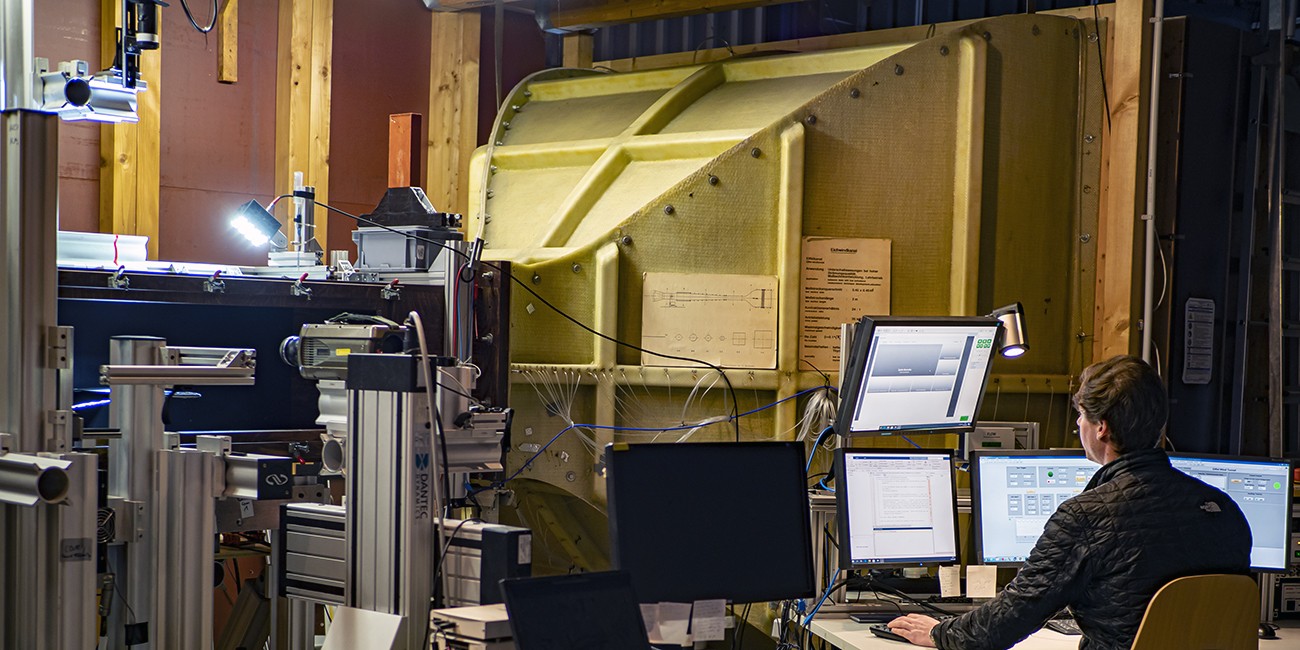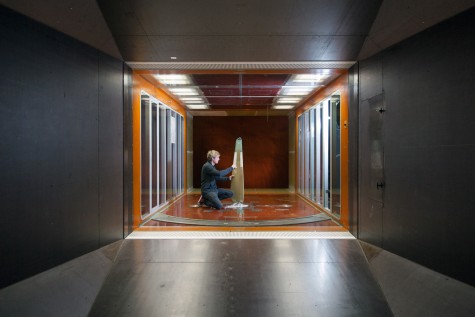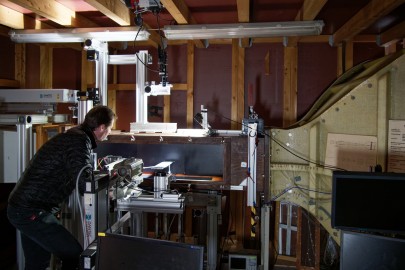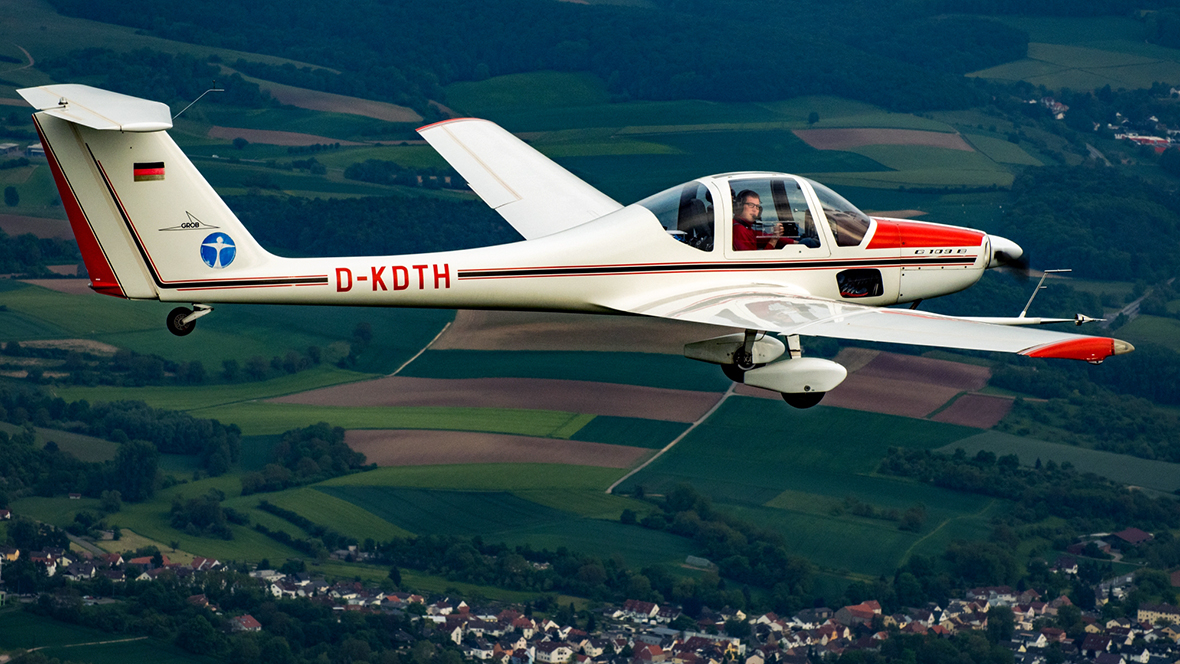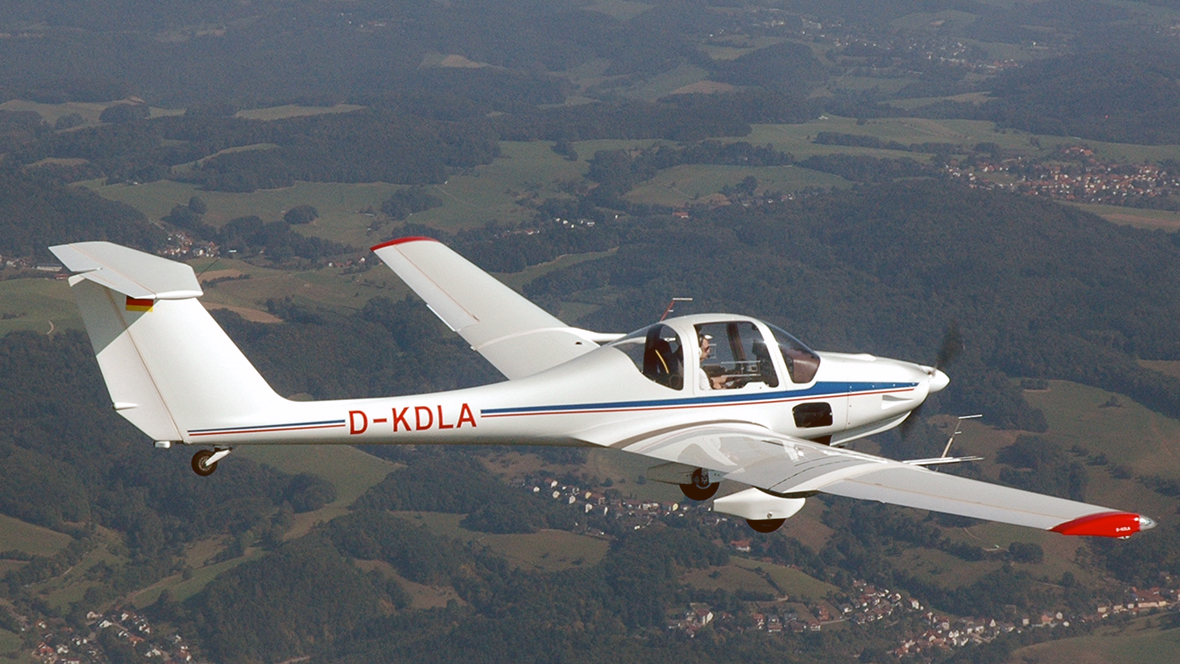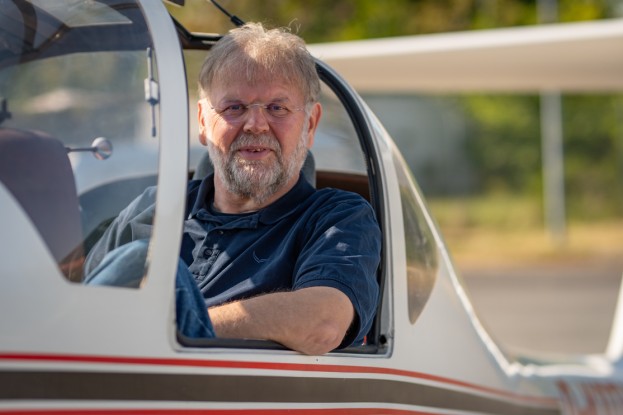Wind tunnels
The biggest wind tunnel in Griesheim is the subsonic wind tunnel. The conduit has a cross section of 2.9 m x 2.2 m and is 4.8 m long. The maximum air velocity is 68 m/s.
The trisonic blow down wind tunnel is supplied by a compressed-air vessel with a storage volume of 8 m³ and a maximum storage pressure of 50 bars. Mach numbers between 0.6 and 4.0 are adjustable via a variable nozzle (subsonic, transsonic, supersonic). Maximum blow time is 60 s at Mach 4. The conduit cross sectional area is 150 mm x 150 mm.
Overview of specifications (in German, PDF) (opens in new tab)
The small Eiffel-type wind tunnel has a cross section of 45 cm x 45 cm. It is used for fundamental research and to calibrate probes. The maximum air velocity is 70 m/s.
-
![]() Picture: Martin Stenger
Picture: Martin StengerThe Institute for Fluid Mechanics and Aerodynamics operates two Grob G109b motorgliders for research and teaching activities. -
![]() Picture: Martin Stenger
Picture: Martin Stenger -
![]() Picture: Martin Stenger
Picture: Martin StengerAugust Euler Airfield is an approved scientific air field with the designation EDES. The airfield is used to conduct flights according to visual flight rules (VFR) during daytime and for research purpose. -
![]() Picture: Martin Stenger
Picture: Martin Stenger -
![]() Picture: Martin Stenger
Picture: Martin Stenger
- Go to picture 1
- Go to picture 2
- Go to picture 3
- Go to picture 4
- Go to picture 5
The Department of Fluid Mechanics and Aerodynamics operates two Grob G109b motorgliders for research and teaching activities.
The Grob G 109b is a two-seated touring motorglider with controllable pitch propeller manufactured by Grob Aircraft AG.
Both aircraft have been modified in order to meet special requirements of research and educational flight operation.
Due to its design as a powered glider, the G109b is particularly suitable for research flights to study laminar-turbulent transition.
Here, the effect of various influencing factors on the flow around the aircraft under real atmospheric conditions is investigated.
Friction forces in the boundary layer above the airfoil surface accounts for a large proportion of the total drag of an aircraft. The magnitude of the frictional drag is largely determined by the position of the transition from the low-drag laminar boundary layer to the higher-drag turbulent boundary layer. Research activities of the SLA group focus on gaining a better understanding of the laminar-turbulent boundary layer transition to derive methods to manipulate transition. Passive and active methods of flow control are considered.
In addition to the research activities, teaching activities also take place at the August-Euler-Airfield in terms of bachelor and master theses within research projects as well as in the form of student internships. The second G109b is available for student practical courses, which complement the lectures “Aerodynamics 2” of SLA as well as the lecture “Flight Mechanics” of the department Flight Systems and Control Engineering. The aircraft is equipped with measurement equipment specifically developed for this purpose, which allows students to practically deepen their theroretical knowledge.
August Euler Airfield
August Euler Airfield is an approved scientific air field with the designation EDES. The airfield is used to conduct flights according to visual flight rules (VFR) during daytime and for research purpose. The Institute of Fluid Mechanics and Aerodynamics operates its two motorized powered gliders at the airfield.
Airfield data:
Pavement: Asphalt
Direction: 07/25
Length: 1155m
Width: 21m
We have a hangar (20 x 25m) for the storage of the two aircrafts on the airfield.
In the tower building, which is located directly at the airfield, there is an office with equipment needed for flight operations, several meeting rooms of different sizes and an exhibition about the history of the August Euler airfield.
Flow measurement technology
Constant Temperature Anemometry (CTA)
Hot-wire probes offer the possiblity to determine flow velocities with a high temporal resolution, as is necessary for unsteady effects or measurement of degrees of turbulence. CTA techniques use very fast control loops to keep the sensor at an average constant temperature.
Particle Image Velocimetry (PIV and µPIV)
Particle Image Velocimetry (PIV) is a non-instrusive optical technique to determine velocity fields: The fluid is seeded with particles and photos are taken at short intervals. From the particle positions the direction and velocity can be calculated. The Institute SLA has PIV and µPIV (for flow measurements in micro channels) systems.
Laser-Doppler-Anemometrie (LDA)
The Laser-Doppler technique is based on determining the Doppler shift of the light scattered by a moving object that is illuminated by a laser. As the frequency of the light cannot be measured directly, it is brought to a range of several MHz by a reference beam.
Laser-induced Fluorescence (PLIF)
PLIF techniques are based on the fluorescence of a species excited by a laser and are a reliable method to visualize flow or measure species concentrations and temperature.
Phasen-Doppler-Anemometrie (PDA)
The Phase Doppler Anemometry (PDA) systems at the Institute are used to measure the size, velocity and concentration of spherical particles, droplets, or bubbles suspended in gaseous or liquid flows.
Shadowgraphy
The Institute SLA has systems to measure the size and velocity of particles with the help of a special background illumation and an image analysis software.
Photron SA-X2-C
- Max. resolution: 1024 x 1024 pixels
- Max. framerate: 1.08 million fps
- Max. sensitiviy: 10,000 ISO (colour)
Photron SA-X2-M
- Max. resolution: 1024 x 1024 pixels
- Max. framerate: 1.08 million fps
- Max. sensitivity: 25,000 ISO (b/w)
Photron MC 2.1
- Max. resolution: 512 x 512 pixels
- Max. framerate: 10,000 fps
- compact size of both camera heads (35 x 35 x 33 mm, sowie 23 x 23 x 77 mm)
Photron Sa-1, Model 675K
- Max. resolution: 1024 x 1024 pixels
- Max. framerate: 675,000 fps
- Max. sensitivity: 10,000 ISO
Phantom V 12.1 (zwei Systeme vorhanden)
- Max. resolution: 1280 x 800 pixels
- Max. framerate: 1 million fps
- Max. sensitivity: 6,400 ISO (b/w)/1,600 (colour)
Phantom V2012
- Max. resolution: 1280 x 800 pixels
- Max. framerate: 22,500 fps
- Max. sensitivity: 160,000 (colour) – 32,000 ISO (b/w)
Shimadzu HPV2
- Max. resolution: 312 x 260 pixels
- Max. framerate: 1 million fps
- good performance in poor lighting conditions

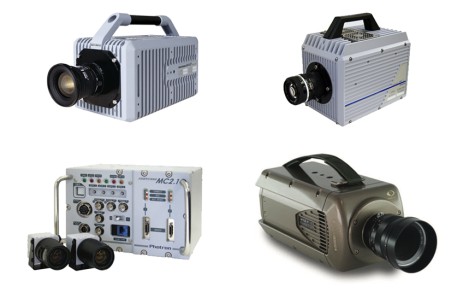
PCO Edge 5.5 (two systems)
- Max. resolution 2560 x 2160 pixels
- Max. framerate: 100/50 fps
IDS UI-3180CP-M-GL Rev 2 (two systems)
- Max. resolution 2592 x 2048 pixels
- Max. framerate: 73 fps
Thorlabs DCC1240-C
- Max. resolution 1280 x 1024 pixels
- Max. framerate: 25.8 fps
- Max. shutter speed: 1/1000 s


Test benches
For further information about our test rigs, please refer to the pages of our scientific staff.

